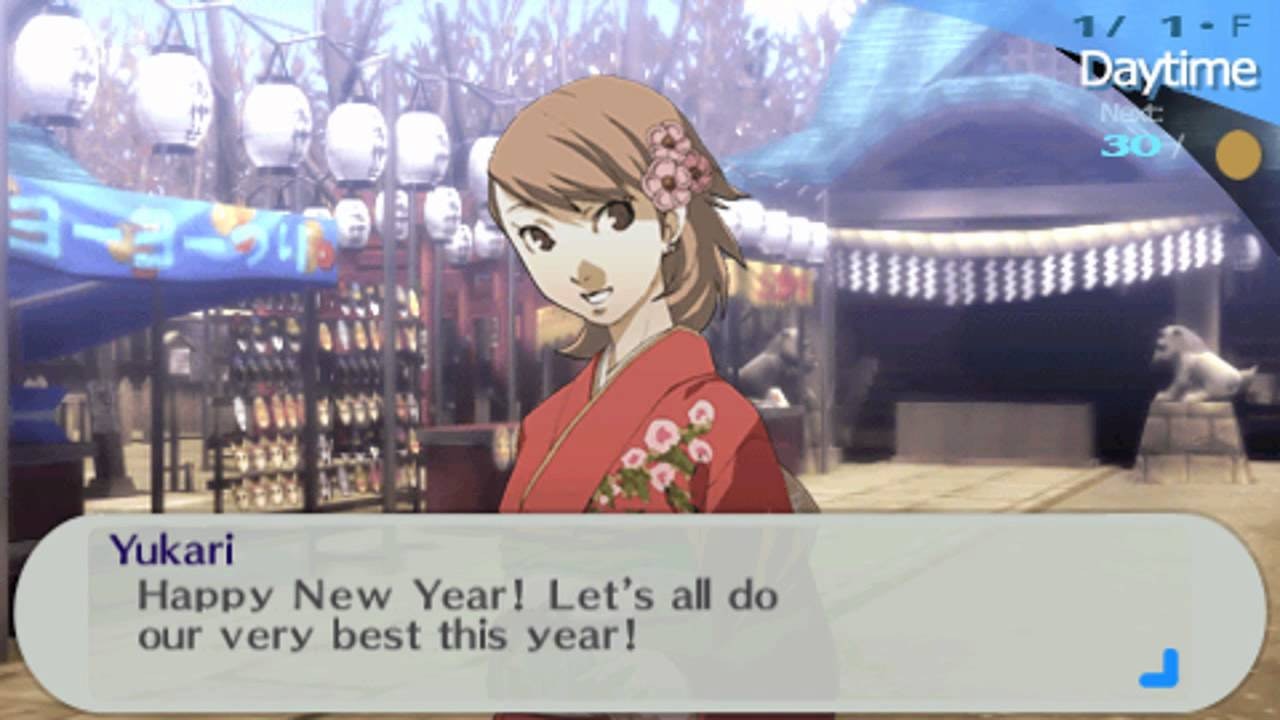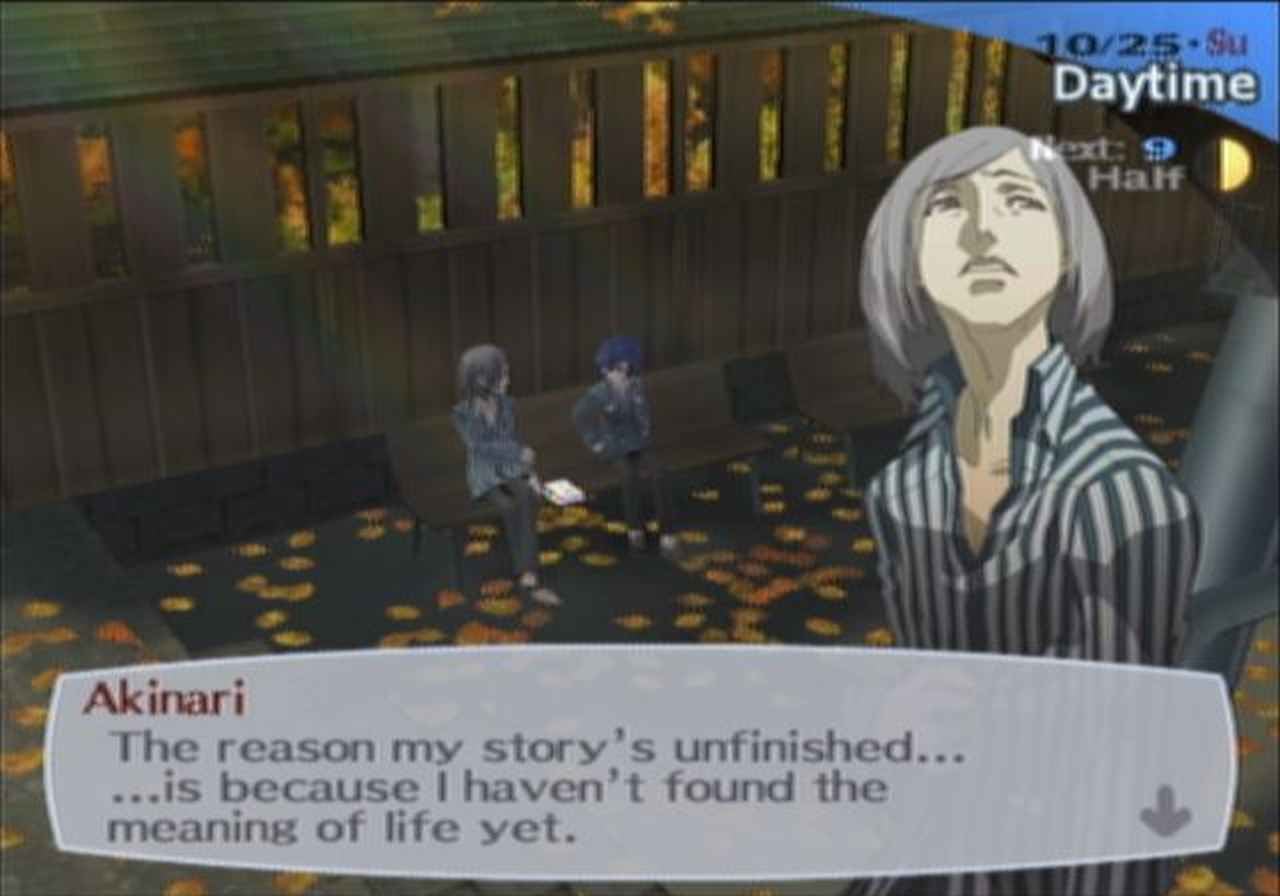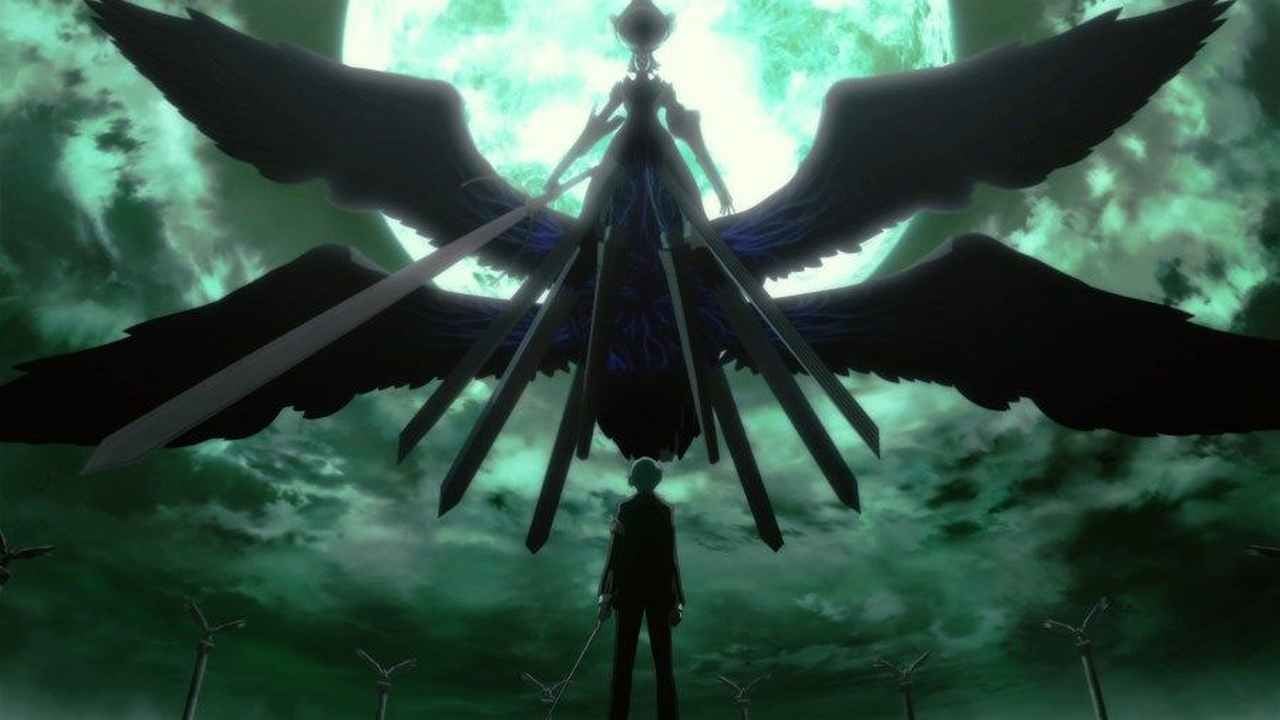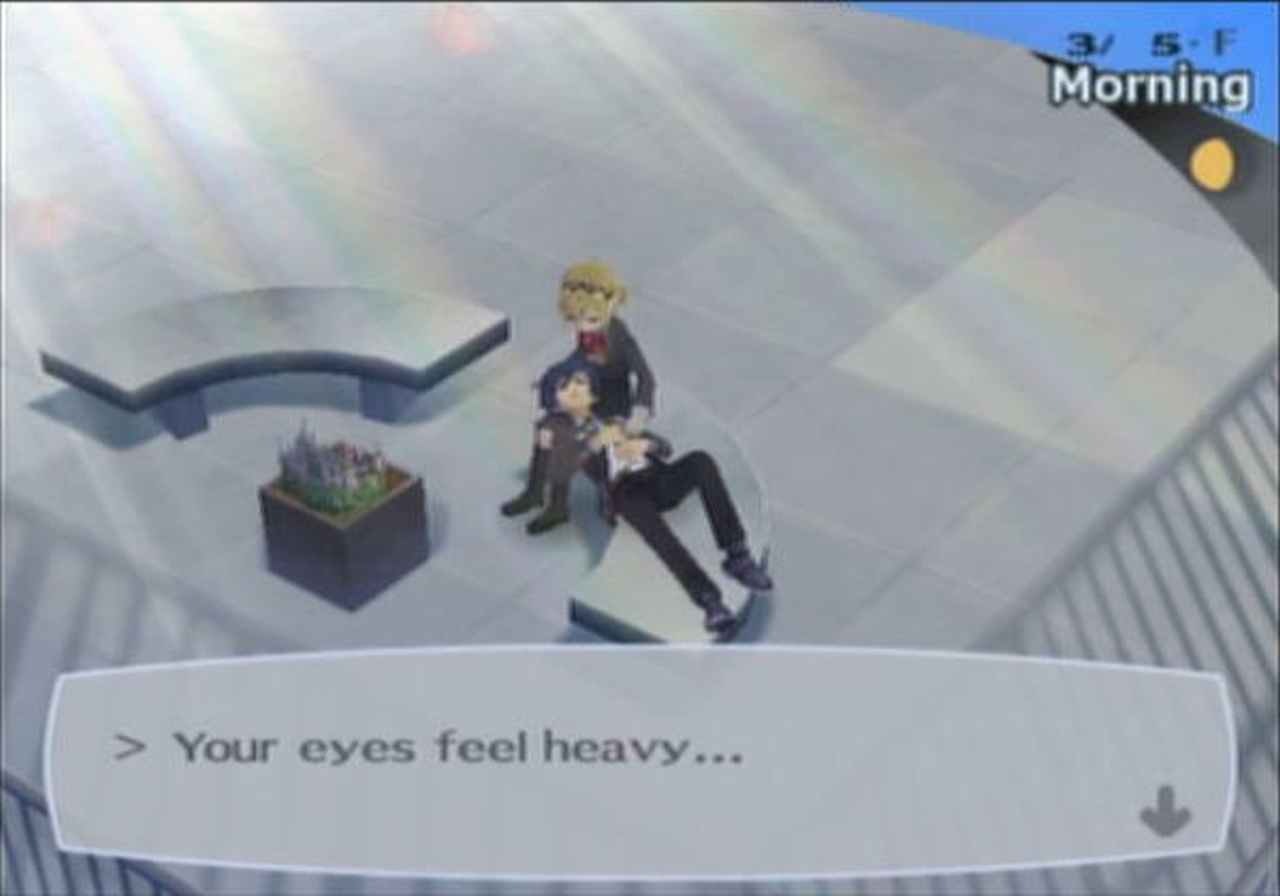
All things must end. This is the nature of the world. This goes for the media we consume as well; every beginning has its close. Video games often give players a way around this, offering a chance to explore the world even after the main plot has occurred to avoid this sense of loss.
Persona 3 leans into the dread of an ending, the inevitable loss that comes with the story's close. Fifteen years later, Persona 3’s willingness to create an ending that sits in its uncomfortableness makes it one of gaming’s most emotional goodbyes and a high point for the series.
Beginnings and endings

The celebration of a new year is not what one expects when you think about the end of the world. Yet with the threat of one last month to live, the protagonist and their friends, members of SEES, cling to some sense of normalcy through ritual.
The true ending of Persona 3 occurs when the player spares Ryoji in their final confrontation on December 31. Without his death, the being Nyx will come down and destroy the entire world. But the protagonist still chooses mercy, knowing Ryoji is an unwilling participant in this cataclysm. With this choice, the game unlocks the month of January.

January is a depressing month. You can feel the cold creep into your bones and make a home there, unshakeable. January is the last month on earth for the protagonist and their companions. On the 31st, Nyx will descend and bring the end of the world, and there is nothing that you can do to stop it. All of this is inevitable. But the slow march of time makes you live with this truth for every excruciating tick of the clock.
Persona 3 forces you to continue with the game’s calendar system. Each day must pass slowly, as you decide to bond with friends or explore the city. But even if you try to pretend the end isn’t coming, the city will remind you. Once filled with excitement and color the streets slowly fill with litter as January creeps on. No one cleans it up, why should they?
So Long

The people who inhabit Tatsumi Port Island are stuck in a mass depression. More citizens become affected by the game’s “Apathy Syndrome” and beings known as the Lost appear in higher numbers. It is all a reflection of a building anxiety that the world is ending. Persona 3 explains that Apathy Syndrome comes from people giving up on life.
In addition to the miasma of the town, a cult of Nyx has sprung up claiming that the end of the world will be salvation. It becomes common to encounter the cult’s followers on the street handing out brochures and pamphlets that describe the coming apocalypse.
After the days pass, the 31st is at hand. Making their way up to the top of Tartarus (the game's massive dungeon), SEES is confronted by Ryoji, who has now fully transformed into Nyx's avatar. Despite the team’s best-efforts Nyx is summoned and descends to Earth. The moon cracks open, and people across the planet die.

With no other option, the protagonist takes a page directly out of Tellah’s playbook from Final Fantasy 4. They use the entirety of every persona they have gathered, every social link, and every bond they have forged with their friends along the way to seal Nyx away forever. But this is done at the cost of the protagonist’s own life.
Memories of the past year are wiped from the minds of every member of SEES. They return to their lives and finish the school year. Suddenly they remember a promise they made to meet on the rooftop of the school at graduation should they survive. They make their way up to reunite with the protagonist for a brief moment. The protagonist lays in Aigis’ lap and peacefully drifts off. A quiet death.
Pushing the boulder
Trigger Warning: Mentions of suicide.

“The absurd man will not commit suicide,” says philosopher Albert Camus, “he wants to live, without relinquishing any of his certainty, without a future, without hope, without illusions … and without resignation either. He stares at death with passionate attention and this fascination liberates him.”
Persona 3 is a game obsessed with death. The intro even telegraphs the entire story by flashing the Latin phrase “Memento mori” on screen. Often translated as “Remember, you will die” the phrase more accurately means “Remember, you MUST die.”
The method by which you summon personas is through a tool called an evoker, something that is simply a gun. The protagonist holds it up to their head and pulls the trigger in a simulated suicide at every summoning. In his essay The Myth of Sisyphus, Camus postulated that the reality of life is enough to drive anyone to end their existence. It is only through looking Death in the face and understanding the absurdity of hope and joy that one continues to live.

For the members of SEES, there is only loss. Throughout the game people die, and SEES has been helpless to save them. The citizens of the town suffer from an affliction whose root cause is the understanding of the inevitability of life, and the deep anxiety that fills one at this revelation.
Rather than face God, Persona 3 is a JRPG that makes you face Death.
And yet there is always hope, there is meaning. “One must imagine Sisyphus happy” Camus says about the human condition. Like the Greek myth, we are stuck in an inescapable cycle of suffering, but we keep pushing the boulder. We keep living.
January is a month of contradiction. A month in which you cannot escape the days marching towards the end. The end of the world, the end of the protagonist, the end of the game. But SEES celebrates the potential of a new year. When asked what she wished for Fuuka says she wished for a good year, “it’s generic, but it’s what I really want”. Even in the face of death, she dreams of things that may not happen. How absurd.
Persona 3 Portable will launch for Xbox Series, PlayStation 4, Xbox One, Switch, and PC via Steam and Microsoft Store in 2023. It is already available for PSP.







